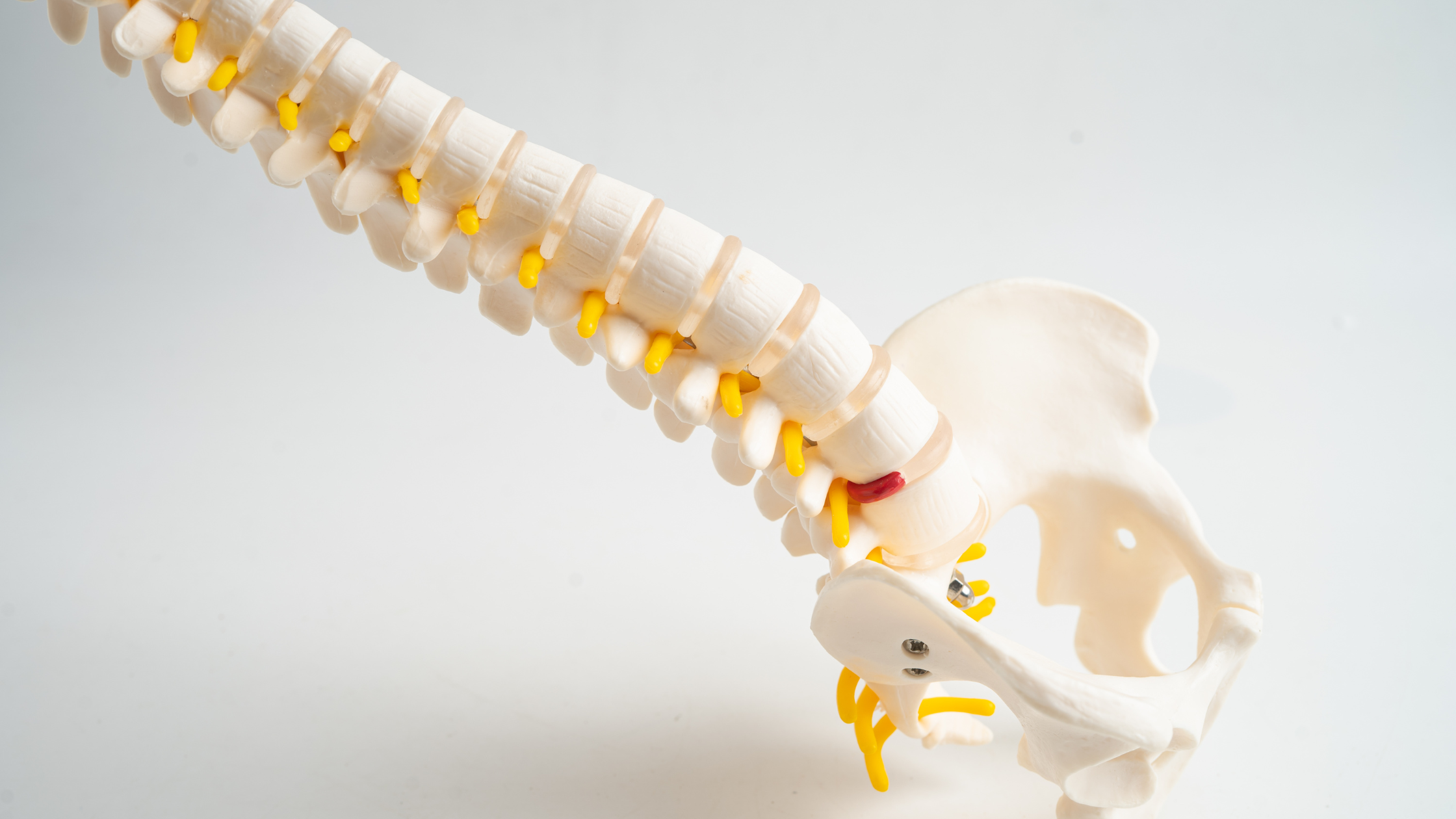
Back pain is one of the most common reasons people seek medical care, and one frequent culprit is a herniated disc. This condition can cause anything from mild discomfort to severe pain that interferes with daily activities. Understanding what a herniated disc is, why it happens, and how it can be treated is key to finding relief and protecting your spine health.
What Is a Herniated Disc?
Your spine is made up of bones called vertebrae, cushioned by small, gel-filled discs that act like shock absorbers. Each disc has a soft, jelly-like center (the nucleus pulposus) surrounded by a tough outer layer (the annulus fibrosus).
Herniated discs occurs when the soft inner material pushes through a tear or weakness in the outer layer. This bulging material can press on nearby spinal nerves, leading to pain, numbness, or weakness—especially in the arms or legs, depending on where the herniation occurs.
Common Causes of a Herniated Disc
- Age-related wear and tear (degenerative disc disease): As we age, discs lose water content and flexibility, making them more prone to tears.
- Repetitive movements or poor posture: Frequent bending, lifting, or twisting can place stress on the spine.
- Injury or trauma: A fall, car accident, or sudden strain can cause a disc to rupture.
- Genetic factors: Some people may have a predisposition to developing disc problems.
- Sedentary lifestyle or obesity: Weak core muscles and excess weight increase pressure on the spine.
Symptoms of Herniated Discs
- Localized pain in the neck or lower back
- Radiating pain down the arm (cervical spine) or leg (lumbar spine)
- Numbness or tingling in the limbs
- Muscle weakness in the affected area
- Pain that worsens with movement, coughing, or sneezing
If you experience sudden pain, numbness, or loss of bladder or bowel control, seek medical attention immediately—this may indicate a serious condition called cauda equina syndrome.
Diagnosing a Herniated Disc
A proper diagnosis typically begins with a physical examination and review of your symptoms. Your doctor may recommend imaging tests to confirm the diagnosis and assess the severity:
- MRI (Magnetic Resonance Imaging): Provides detailed images of soft tissues, including discs and nerves.
- CT scan: Offers cross-sectional views of the spine.
- X-rays: Help rule out other causes of pain, such as fractures or arthritis.
- Nerve studies: Identify nerve compression or damage.
Treatment Options for Herniated Discs
Fortunately, most herniated discs improve without surgery. Treatment focuses on reducing pain, improving mobility, and allowing the disc to heal naturally.
1. Conservative (Non-Surgical) Treatments
- Rest and activity modification: Short rest periods and avoiding aggravating activities can help relieve symptoms.
- Physical therapy: Customized exercises strengthen the core and back muscles, improve posture, and reduce pressure on the affected disc.
- Medications: Over-the-counter pain relievers, muscle relaxants, or prescription medications may be used to manage pain and inflammation.
- Epidural steroid injections: Targeted injections can reduce nerve inflammation and provide temporary relief.
2. Minimally Invasive Procedures
- Microdiscectomy: A small portion of the herniated disc is removed to relieve nerve pressure.
- Endoscopic discectomy: A camera-guided, smaller-incision version of a discectomy that reduces recovery time.
- Radiofrequency ablation (RFA): Uses heat to disrupt pain signals from irritated nerves.
3. Surgical Options
- Laminectomy: Removal of part of the vertebra (lamina) to relieve pressure.
- Spinal fusion: Stabilizes the spine by fusing two or more vertebrae together.
- Artificial disc replacement: Replaces the damaged disc with a synthetic one to preserve mobility.
Recovery and Prevention
Recovery time varies depending on the severity of the herniation and the treatment chosen. Many patients experience significant relief within a few weeks with conservative care.
To prevent future disc issues:
- Maintain good posture
- Strengthen your core and back muscles
- Avoid heavy lifting or twisting
- Stay active with low-impact exercises such as walking, swimming, or yoga
- Maintain a healthy weight
When to Seek Professional Care
Persistent back or neck pain should never be ignored—especially if it radiates to the limbs or causes numbness or weakness. Early evaluation can prevent further damage and help you return to normal activity sooner.
Final Thoughts
Herniated discs can be painful and frustrating, but it’s also highly treatable. With the right combination of care—from conservative therapies to minimally invasive procedures—you can relieve pain, restore movement, and protect your spine health for years to come.

